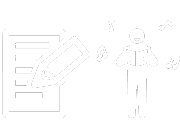Lessons
Lessons
Solfège
Solfège is a comprehensive training method that develops the essential foundations for making music. It nurtures your sense of pitch, rhythm, harmony, phrasing, and sight-reading—core skills for both performance and composition. Through the study of music theory and history, you’ll also sharpen your understanding of musical character and nuance, building the expressive power to bring music to life.
At MonLasol, our solfège lessons help you deepen your understanding of the score, imagine the music behind it, and gain the tools to bring that imagined sound to the page—or to sound.
Sample Lesson Topics at MonLasol
Music Theory
Learn the underlying principles and structures that shape music. Understand how sound functions, and build a solid foundation for performance and analysis. (Includes fundamentals)
Dictation
Train your ear to accurately notate what you hear. Through melodic, rhythmic, and harmonic dictation, develop both musical hearing and notational fluency.
Sight-Singing
Sing directly from the score without using an instrument. Build the bridge between visual notation and musical expression. Includes practice with unfamiliar excerpts to strengthen first-sight reading.
Rhythm Training
Perform assigned rhythms without pitch. Internalize pulse, phrasing, and tempo flow, and develop a precise and musical sense of rhythm through your body.
Clef Reading
Quickly read music in treble, bass, alto, and other clefs without adding pitch. Strengthen sight-reading speed and flexibility—skills vital for ensemble work and score reading.
Musical Analysis
Explore the structure and background of compositions. Study form, harmonic progression, and phrasing to gain deeper insight into the composer’s intent and the music’s meaning.
Harmony
Harmony, alongside melody and rhythm, is one of the three fundamental elements of music. Harmony studies how chords—multiple notes sounding together—are formed, and how they connect to create flow and expression in music.
By studying harmony, you’ll develop a natural sensitivity to tonal flow and resonance. This “sense of harmony” helps you intuitively grasp keys, modulations, and chord progressions. You’ll start to anticipate the next chord, make quicker and more confident harmonic choices, and build a stronger foundation for composition. It also sharpens your awareness of phrasing and texture, allowing you to shape sound with intention. As a result, your performance or interpretation gains depth, and your sound becomes more dimensional and expressive.
Harmony and Écriture
Harmony is one part of écriture—a broader field of composition technique rooted in traditional writing styles. Écriture is about learning and mastering the stylistic rules of musical writing as a means of artistic expression. As the word implies, it’s not something you simply read about—it must be practiced. You learn by writing, receiving feedback, and revising. This is how the skills become intuitive.
At MonLasol, we offer hands-on training in French-style harmony, using materials based on the French conservatory curriculum.
Écriture includes not only harmony, but also counterpoint, fugue, and orchestration. If you’re interested in these areas, feel free to reach out.
Sample Lesson Topics at MonLasol
Bass Exercises
Add three upper voices (soprano, alto, tenor) to a given bass line to construct a complete and natural harmonic texture.
Soprano Exercises
Complete a harmonic progression by supplying bass, alto, and tenor lines beneath a given soprano melody.
Harmonic Analysis
Analyze the harmonic structure of existing works to better understand function, voice leading, and the composer’s intent.
Stylistic Harmony
Practice writing harmony in the style of specific composers or periods, developing a practical understanding of historical techniques.
Lesson Format
MonLasol offers online lessons through a correspondence-based, written feedback system.Using materials aligned with the French conservatory curriculum, we tailor each lesson to the student’s level and goals.
Before You Begin
- After enrollment, we’ll ask about your musical background, current level, and learning objectives.
- Based on this, we’ll recommend appropriate textbooks for you to purchase.
You can start your lessons at any time — there’s no need to wait for the beginning or end of the month.
You can start your lessons at any time—there’s no need to wait for the beginning or end of the month.
Lesson Flow
- Lessons are delivered twice a month, every 15 days.
- The schedule begins from the date of your first assignment.
Step 1

Receive your assignment instructions
by email.
Step 2

Complete
the assignment
as instructed.
Step 3

Submit your answers by email
– PDF or audio
(such as mp3).
Step 4

Receive corrected assignments and written feedback.
Feel free to ask questions if needed.
Step 1

Receive your assignment instructions by email.
Step 2

Complete
the assignment
as instructed.
Step 3

Submit your answers
by email
– PDF or audio
(such as mp3).
Step 4

Receive corrected assignments and written feedback.
Feel free to ask questions if needed.
Additional Notes
- Each assignment is equivalent in content to a 60-minute private lesson.
(e.g., sight-singing drills, dictation exercises, harmony writing tasks) - We recommend submitting your work within one week of receiving the assignment.
Late submissions are accepted. - New assignments are sent every 15 days, regardless of submission status.
If you submit on time, a supplementary review task based on your answers will also be included. - You may ask unlimited questions about your corrected work—no restrictions.
Tuition
- Enrollment Fee
¥5,000 (¥5,500 incl. tax) - Solfège
2 lessons per month: ¥15,000 (¥16,500 incl. tax) - Harmony
2 lessons per month: ¥15,000 (¥16,500 incl. tax) - Additional or One-Off Lessons
We offer flexible options upon request. Feel free to contact us for details.
If you’re interested in counterpoint, fugue, or orchestration, please reach out for a personalized consultation.
How to Request a Free Trial Lesson
At MonLasol, you can try one free lesson in either solfège or harmony.
If you’re interested, simply fill out the contact form
and include one of the following in the “Message” section:
- Requesting a trial lesson in Solfège
- Requesting a trial lesson in Harmony
Once we receive your message, we’ll review the details and send you the trial assignment.
How to Request
a Free Trial Lesson
At MonLasol, you can try one free lesson in either solfège or harmony. If you’re interested, simply fill out the contact form and include one of the following in the “Message” section:
- Requesting a trial lesson in Solfège
- Requesting a trial lesson in Harmony
Once we receive your message, we’ll review the details and send you the trial assignment.
